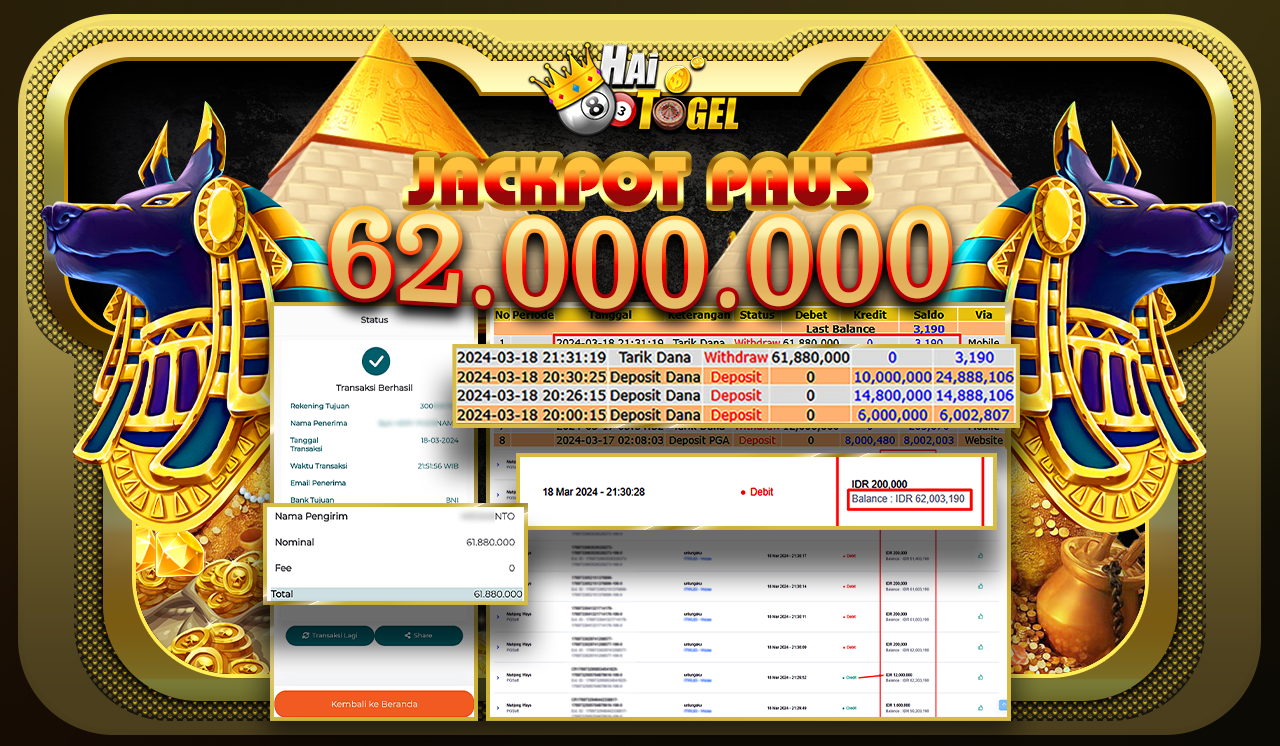| Informasi Situs | ||
|---|---|---|
| Nama Situs | HAITOGEL | |
| Jenis Permainan | Togel Online | |
| Minimal Deposit | Rp 10.000 | |
| Metode Deposit | Transfer Bank & E-Wallet | |
| Mata Uang | IDR (Indonesian Rupiah) | |
| Jam Operasional | 24 Jam Online | |
| Rating | ⭐⭐⭐⭐⭐ 120,805,389 User | |
| Daftar Sekarang | KLIK DISINI | |
HAITOGEL : Jackpot Toto HK Bersama Bandar Togel Terpercaya
Haitogel adalah bandar togel HK terpercaya dengan berbagai keunggulan yang membuatnya menjadi salah salah situs bermain terpercaya dari Indonesia.
Kenapa Harus Pilih Haitogel?
Ada banyak alasan kenapa Haitogel jadi favorit para pemain togel online. Berikut beberapa keunggulannya:
Prediksi Jitu dan Akurat
Haitogel dikenal dengan prediksi angka togelnya super akurat. Dengan tingkat akurasi hingga 90%, peluang untuk menang jadi jauh lebih besar. Prediksi ini dibuat oleh tim profesional menggunakan algoritma canggih, jadi nggak perlu ragu buat mencobanya.
Data Keluaran Terupdate
Setiap hasil keluaran togel HK di-update secara real-time. Kamu bisa langsung cek hasil undian tanpa perlu menunggu lama. Ini sangat membantu buat yang ingin menganalisis angka untuk taruhan berikutnya.
Bonus dan Promo Melimpah
Siapa sih yang nggak suka bonus? Di Haitogel, ada banyak promo menarik seperti bonus new member, cashback, hingga referral. Semua ini bisa kamu manfaatkan untuk menambah modal bermain serta memperbesar peluang menang.
Cara Mudah Bergabung pada Haitogel
Buat kamu yang baru pertama kali main, jangan khawatir! Proses pendaftaran di Haitogel sangat mudah:
- Daftar Akun: Kunjungi situs resmi Haitogel dan klik tombol "Daftar". Isi formulir dengan data valid.
- Deposit: Lakukan deposit minimal Rp10.000 melalui bank online atau e-wallet pilihanmu.
- Pilih Pasaran: Setelah saldo masuk, pilih pasaran favorit seperti togel HK, lalu tentukan jenis taruhanmu.
- Pasang Angka: Gunakan prediksi jitu yang tersedia untuk meningkatkan peluang menangmu.
Nikmati Jackpot pada Haitogel
Dengan semua keunggulan di atas, nggak heran kalau banyak pemain berhasil membawa pulang jackpot besar dari Haitogel. Jadi ngapain nunggu lagi? Yuk, daftar sekarang dan coba sendiri serunya bermain pada bandar togel terpercaya ini! Siapa tahu kamu adalah pemenang jackpot berikutnya!
Selamat bermain dan semoga hoki selalu menyertaimu!







